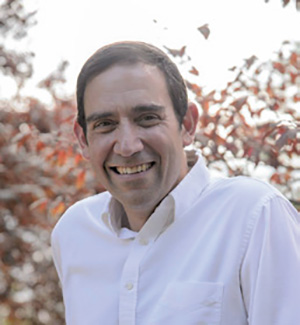
While Western civilization views history as evolutionary and open-ended, Judaism views it is cyclical and predetermined. At several points in our tefillah we recite the verse from Eichah: “Chadesh yameinu k’kedem” (restore the days of old) to punctuate our conviction that ultimately history will revert back to its origins. The cyclical nature of history also implies that historical patterns repeat themselves—particularly events that define Jewish history. We often recognize these “patterns” when they emerge during redemptive stages of Jewish history. However, “patterns” can also be traced during strenuous moments of Jewish history. As Parshat Shemot introduces the first exile, it showcases several patterns of galut that are destined to resurface throughout Jewish history.
The Egyptians didn’t immediately enslave the Jews. The Torah deliberately describes their internal debates about the Jewish problem. Concerned that the Jews would form a league with their enemies, the Egyptians hatched a plan to preempt this threat through gradual discrimination, and ultimately through oppressive enslavement. The Torah portrays this internal discussion with the term “nitchakma,” evoking the image of a political campaign aimed at solving the imagined threat.
Anti-Semitism is so resilient because it is rooted in multiple core facets of human experience. Jews are hated because we represent God in this world and humanity isn’t yet ready to embrace Divine authority. Beyond this theological component, we are hated because we challenge the world’s conscience to higher moral ground and, generally, humanity finds this challenge burdensome and abrasive. Without our great moral challenge, mankind is left to their own course and self-centered existence. A morally indifferent lifestyle is easier, while a morally sensitive existence requires conscience and sacrifice. Of course our haters can’t and won’t vocalize these reasons for their anti-Semitism, but we believe in larger metaphysical forces that, though rationally untraceable, nonetheless drive human history.
In addition to theologically based anti-Semitism and their animosity to our moral challenge, often anti-Semitism is a product of an anxiety even deeper than theology. It is often a projection of a basic primal human fear of the “other” and of those whose lifestyles are different. Every human is cast in the image of God and shares a common Creator. Yet often we are incapable of identifying that common ground. Culture, religion and race begin to fragment human beings, and often a divide emerges, which causes alienation, distrust and, ultimately, seething hatred. Egyptians lived in existential fear of their political foes the Hittites and projected these anxieties on the defenseless Jews. The Jews were a foreign implant, inhabiting a secluded area of Goshen, speaking a separate language and arousing dread. This irrational panic is already displayed in Parshat Miketz, which describes the Egyptians as unable to share a meal with the visitors from Israel whose culture and table habits repulsed them. Hundreds of years later, after the death of Yosef and his brothers, this soft dislike of Jews metastasized into abject terror concerning the threat these “different” Jews posed. During his lifetime, Yosef served as a bridge to the shared past of Egyptians and Jews. During that earlier period, each nation was subjected to the common challenge of a worldwide famine and they sensed a common purpose in the struggle for survival. After his death, Yosef’s absence created a vacuum of communication and common interest. In the absence of direct contact, fear dominates and plays tricks on the human imagination. The irrational and baseless fear erupted into the first historical instance of anti-Semitism.
However, for tyranny and persecution to be implemented, a narrative must be woven to justify acts of cruelty. The narrative of anti-Semitism often changes but it always stems from the same primal fear. To justify their project, the Egyptians launched a propaganda campaign aimed at portraying the Jews as enemies of the state. In Parshat Ki Tavo, the Torah describes their treatment of the Jews with an interesting phrase: “Vayarei’u otanu,” which literally translates as they “portrayed us as evil.” Having portrayed the Jewish people as enemies of the state, it was easy to foment public hostility and justify their genocide conspiracy. In the modern era, Hitler took a page from the Egyptian handbook—convincing a world obsessed with genetics and racial competition that the Jews were a sub-race that threatened the Aryan purity of Christian Europe. Scripting this caricature, he fomented an entire continent toward the planned extermination of the Jews. In the modern milieu, our enemies have cast us as colonialists who have illegally ethnically cleansed Palestine of its indigenous inhabitants. This false narrative has sanitized vile anti-Semitism for the world’s conscience. Every eruption of anti-Semitism is enabled by a noxious narrative that paints a caricature of a Jew as a threat to public welfare.
The current climate of anti-Semitism has similar roots. In the U.S., anti-Semitism is rooted in a naturalist supremacist narrative that regards the Jews as a contaminating influence of national identity. By contrast, in Europe, anti-Semitism is driven by the far-left liberal camp, which, in its attempt to protect the vulnerable, has cast the Jews as imperialist occupiers administering a discriminatory apartheid state. These two factions share little in common aside from the hatred of Jews. It is unimaginable that these factions in the U.S. and in Europe would ever agree to any joint policy or position outside of this unholy hatred of Jews. Such is the nature of hatred in the human soul: it burns so deep and it is so all-consuming that it blinds us to more important agendas.
Parshat Shemot introduces the terms of our first galut and our first struggle with a broken world that cannot accept the Jewish message. The events that catalyze this period of persecution serve as templates for history. By looking to our past we can better understand and navigate contemporary challenges.
By Rabbi Moshe Taragin
Rabbi Moshe Taragin is a rebbe at Yeshivat Har Etzion located in Gush Etzion, where he resides.








